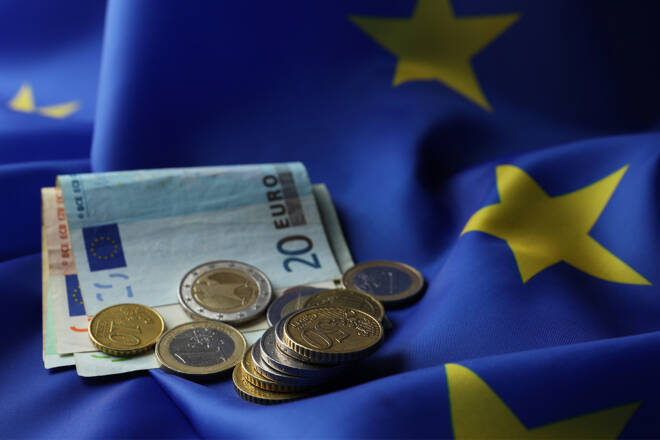Advertisement
Advertisement
Euro Area Growth Beats Forecasts to Support the Hawkish ECB
By:
Economic data from the euro area supported a hawkish ECB stance on monetary policy today. However, bets of a hawkish Fed Chair are clouding the picture.
It was a busy start to the European session. The French economy was in the spotlight early in the session. Prelim January inflation and Q4 GDP numbers drew interest following mixed numbers from Spain and Germany on Monday.
In Q4, the French economy expanded by 0.1%, falling short of a forecasted 0.2% growth rate. The economy grew by 0.1% in Q3. Year-over-year, the economy saw growth slow from 1.0% to 0.5%.
Consumer spending across euro area member states painted a grim picture. Retail sales tumbled by 5.3% in Germany and 1.3% in France. The slump in spending came despite stable labor market conditions, improved consumer sentiment across the euro area, and the milder winter. In January, the German unemployment rate held steady at 5.5%.
For the ECB, the prelim inflation numbers from France followed a similar trend to other euro area member states. The annual inflation rate picked up from 5.9% to 6.0%, supporting the ECB’s hawkish stance on monetary policy.
While the member state numbers drew interest, the euro area GDP number for Q4 had more significance ahead of tomorrow’s Eurozone inflation numbers.
In Q4, the euro area economy grew by 1.9% year-over-year, beating a forecasted 1.8%. The economy grew by 2.3% in Q3. Quarter-on-quarter, the economy expanded by 0.1% versus 0.3% in Q3. Economists forecast the economy to contract by 0.1%.
According to Eurostat,
- Ireland led the way, expanding by 3.5%, followed by Latvia (0.3%) and Spain and Portugal (both expanding by 0.2%).
- Lithuania (-1.7%) recorded the most marked contraction.
IMF and China PMIs Delivered Optimism
The latest GDP numbers followed private sector PMI numbers and IMF growth forecasts from this morning, which painted a rosier picture.
The IMF lifted its 2023 growth forecasts on China’s reopening and economic resilience in the US and Europe. The IMF projected global growth to fall from an estimated 3.4% in 2022 to 2.9% in 2023 before rising to 3.1% in 2024. Notably, the IMF revised the 2023 forecast upwards by 0.2 percentage points.
From China, the NBS Manufacturing PMI increased from 47.0 to 50.1 in January, with the Non-Manufacturing PMI surging from 41.6 to 54.4, reflecting the effect of China’s reopening on the private sector.
EUR/USD Price Action
Ahead of the euro area GDP numbers, the EUR/USD rose to a high of $1.08602 before falling to a low of $1.08022.
However, in response to the euro GDP numbers, the EUR/USD rose to a high of $1.08313 before falling to a low of $1.08202.
At the time of writing, the EUR/USD was down 0.25% to $1.08244.
Next Up
While the economic calendar is on the busier side, investors need to consider ECB member speeches. However, no members are due to speak today, leaving chatter with the media to influence.
It is also a busy day on the US economic calendar. Consumer confidence numbers for January will provide the EUR/USD direction. Other stats include Chicago PMI and housing sector numbers that should have a muted impact on the EUR/USD and riskier assets.
Economists forecast the CB Consumer Confidence Index to rise from 108.3 to 109.0.
No FOMC members are speaking today. The Fed entered the blackout period on Saturday, January 21.
About the Author
Bob Masonauthor
With over 28 years of experience in the financial industry, Bob has worked with various global rating agencies and multinational banks. Currently he is covering currencies, commodities, alternative asset classes and global equities, focusing mostly on European and Asian markets.
Advertisement
